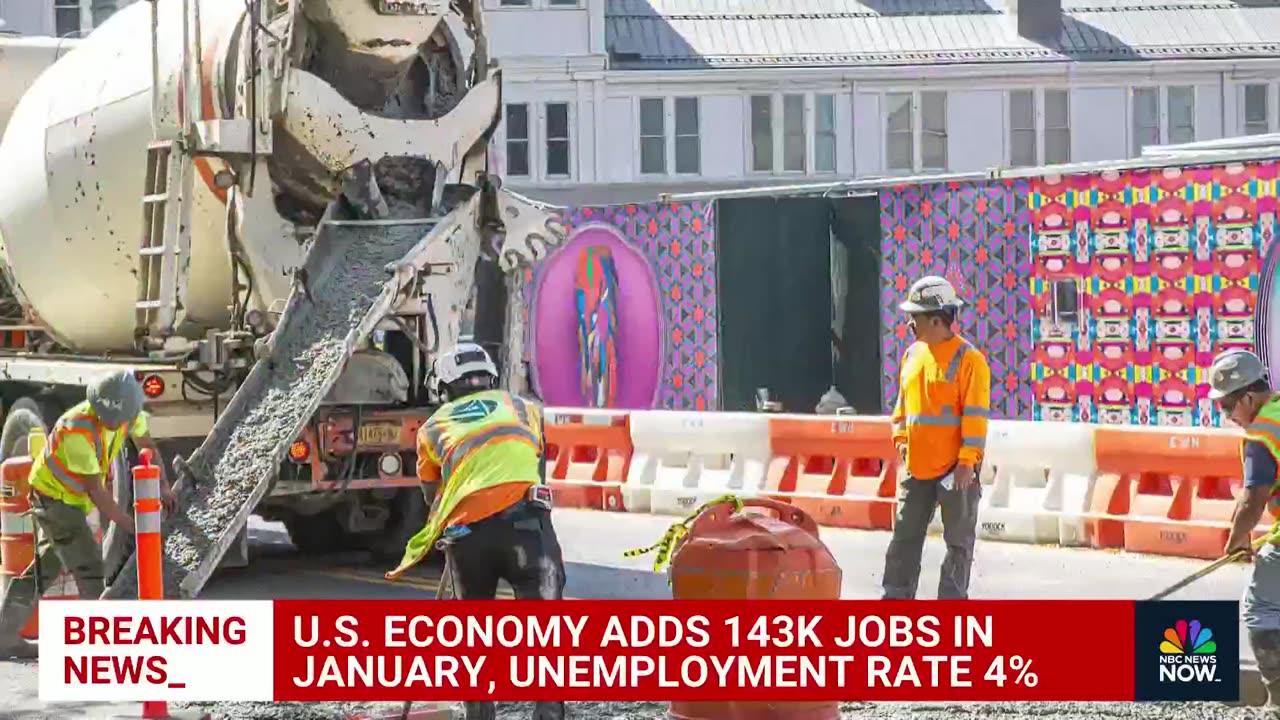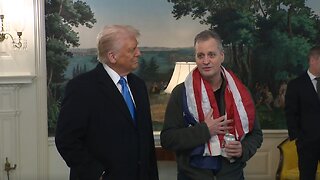Premium Only Content

U.S. added 143,000 jobs in January, unemployment rate dips to 4%
The U.S. added 143,000 jobs in January, fewer than economists expected, but the unemployment rate inched down to 4% from 4.1%, beating forecasts and still near historic lows.
Forecasters surveyed by Dow Jones had anticipated 169,000 payroll gains in January, after a blowout 307,000 jump in December, according to revised tallies. The numbers released Friday by the Bureau of Labor Statistics include routine annual data adjustments, in which November and December payroll levels were revised up by a combined 100,000.
The BLS revised down the monthly pace of job gains for 2024, to an average of 166,000 from a previous estimate of 186,000, reinforcing widespread expectations that hiring last year wasn't quite as robust as earlier data had suggested. For the period covering 2023 and early 2024, the U.S. added 589,000 fewer payrolls.
At the same time, millions of people's paychecks continue to swell. Average hourly earnings rose 4.1% over the past year, partly thanks to minimum wage hikes that took effect last month in 21 states and dozens of municipalities, noted Mark Hamrick, senior economist at Bankrate. The Economic Policy Institute estimated in December that more than 9.2 million workers would see increases in January totaling $5.7 billion.
"Wage growth continues to outpace the recent inflation rate, and even picked up a bit," Hamrick said in a statement Friday. "The still solid job market provides a solid underpinning for Americans to focus on their financial goals," even though "affordability challenges abound," he said.
U.S. stock markets were little changed Friday morning on the heels of the BLS data.
"Today’s jobs report has likely taken a March rate cut off the table," Seema Shah, chief global strategist at Principal Asset Management, said in a statement Friday, referring to the Federal Reserve's next move on interest rate levels. "Aside from a slightly disappointing headline payrolls number, the broader picture is still one of labor market resilience and sustained wage pressures."
How President Donald Trump's agenda affects the economy is one wild card that investors and Fed officials alike are watching closely.
-
 12:06
12:06
John Crump News
20 hours ago $0.42 earnedTwo Cases That Should Be Examined Under President Trump's Executive Order
10.5K3 -
 1:00:33
1:00:33
Trumpet Daily
19 hours ago $3.85 earnedThe Final Coup Attempt - Trumpet Daily | Feb. 11, 2025
10.8K17 -
 2:56:59
2:56:59
TimcastIRL
11 hours agoTrump Border Czar Hints He'll ARREST Leftists Aiding Illegal Immigrants w/Mark Dubowitz | Timcast IRL
238K254 -
 41:14
41:14
The White House
9 hours agoPresident Trump Greets and Welcomes Marc Fogel Back to The United States
117K55 -
 6:48:41
6:48:41
Akademiks
11 hours agoKendrick Lamar performs at the Superbowl. Does NOT LIKE US. Now projected to sell 230K! Drake done?
157K15 -
 5:12:34
5:12:34
MyronGainesX
13 hours ago $33.09 earnedChat With Pearl, Tucker vs Piers, Shopify Cancels Ye, FBI leaks ICE Raids, Trump On Jordan & Gaza!
105K31 -
 1:33:07
1:33:07
Man in America
20 hours ago🚨 Chlorine Dioxide: Banned, Censored & Feared by Big Pharma w/ Jonathan Otto
62.2K73 -
 9:21
9:21
Colion Noir
10 hours agoMan Robbed Carrying Gun In Back Pocket, Then Shot Trying To Get It Back
48.2K21 -
 2:00:39
2:00:39
DLDAfterDark
9 hours ago $11.45 earnedAnderson American Big Bore pistol Contest!
98.8K4 -
 2:02:20
2:02:20
Flyover Conservatives
1 day agoBiohacking Your Health: The Future of Medicine & Longevity - Part 2 - Deep Dive: Drs. Mark and Michele Sherwood | FOC Show
98.7K2